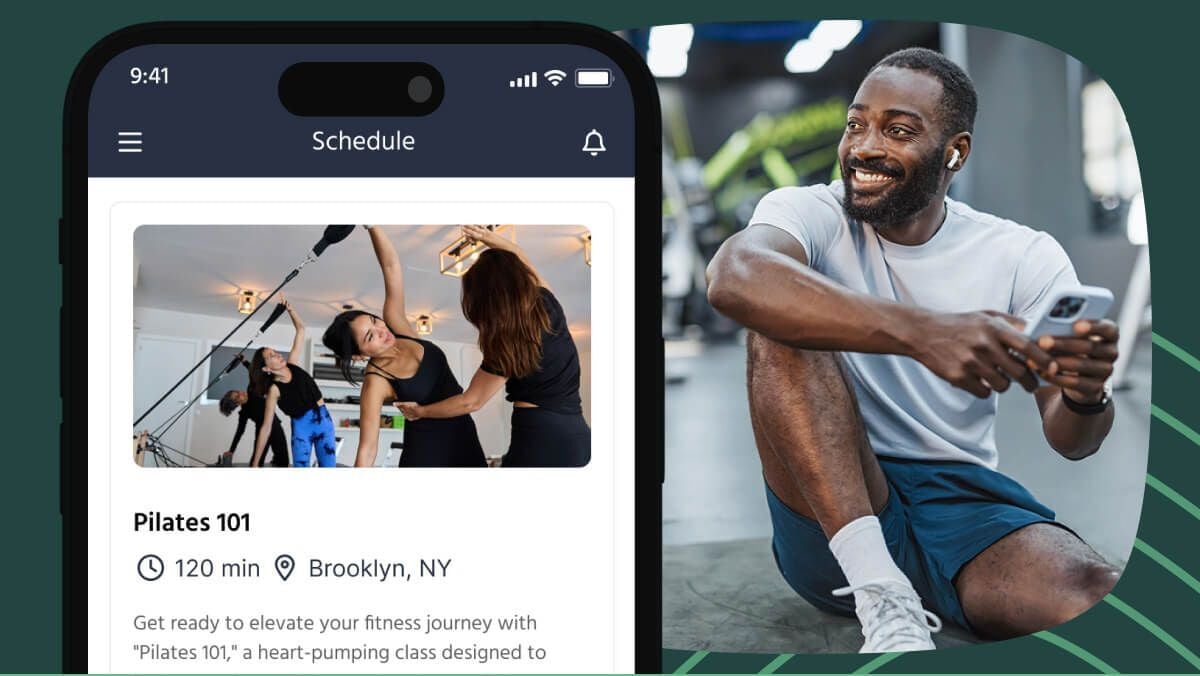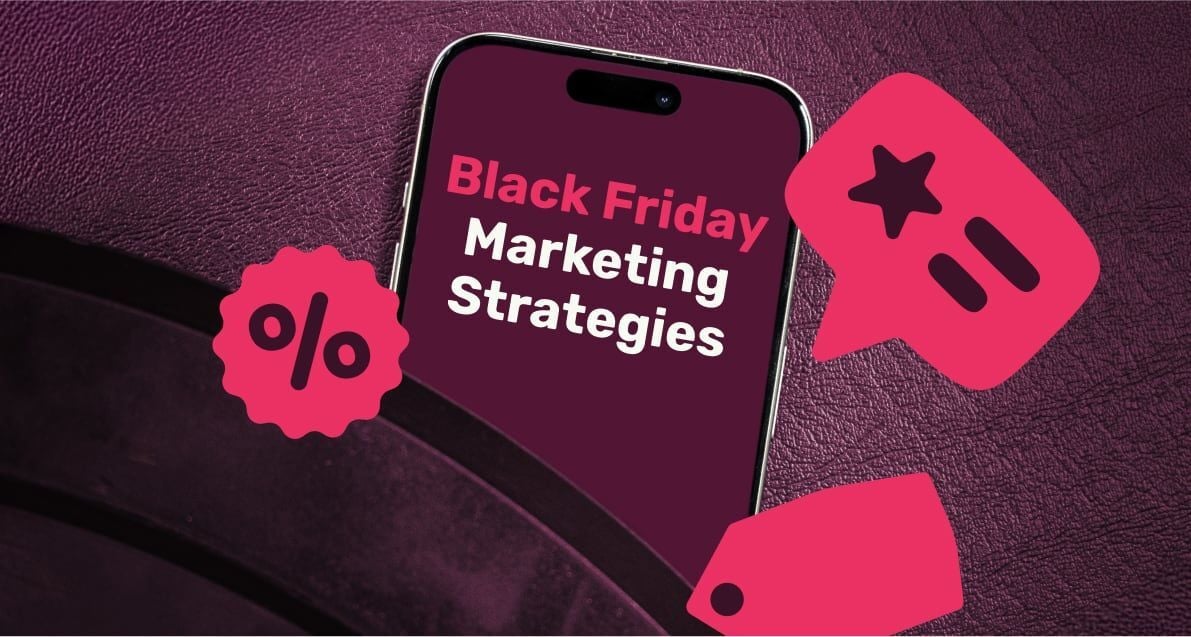Gyms can’t survive on memberships alone. While you can possibly sustain your operations through basic one-for-all membership plans, it takes profit maximization to scale your operations.
Revenue generation through upselling and cross-selling is what you must do to thrive in this competitive fitness market with an average of 30% revenue growth.
Cross-selling and upselling exist in every industry. In its basic form, grocery stores pushing you to buy complementary goods and better products are examples of the same.
However, for your gym, the structure and strategies must differ from, say, your plumber. In this article, we’ll discuss cross-selling and upselling in great detail with a few tips you may implement in your sales strategy.

What is gym cross-selling?
Cross-selling is pushing different products or services that add value to the primary product. For example, you may encourage your clients to get a discounted weekly mountain climbing session that’s included only with the premium package with the basic membership option.
Benefits of cross-selling
Improved customer satisfaction
The objective of cross-selling goes beyond increased profits and thrives on improved customer satisfaction. By understanding client requirements, you can offer them an additional product or service —enhancing their fitness journey.
Increased revenue
Recommending products or services from other categories while cross-selling increases revenue generation and clears up inventory. In a first in first out (FIFO) inventory control strategy that most gyms use, it’s easier to misread available inventory and lose the value of supplements and consumables. Cross-selling allows you to clear them up regularly.
Deeper connection
The deeper the connection a client has with your gym, the harder it gets for them to switch. Whether due to monetary investment or emotional reasons, cross-selling allows you to secure long-term clients without regularly investing heavy resources in them.
Increased CLV
Customer lifetime value (CLV) refers to the revenue extracted from a client over their lifetime in the gym with respect to the investments you’ve made in them. Deeper integrations allow them to become valuable in the long term.
The longer a client is associated with your gym, their CLV improves. As this is a metric used to determine the customer’s value to your business, you can cater to their needs better.
Drawbacks of cross-selling
Misreading the clients
Sales representatives often misread the clients and cross-sell products that they may not need—scaring the client away. Your salesperson recommending Beta-Alanine to clients with weight loss issues is a prime example. Consider reading the clients and their requirements before jumping the gun with your more profitable products.
Canceled services
A major drawback of cross-selling the wrong products is canceled services. According to a Harvard Business study, cross-selling has often been considered a profit-losing strategy if done wrong. It puts stress on clients and can result in the cancellation of even the primary services. However, with proper training and data, it shouldn’t be an issue.
Losing revenue
All the drawbacks of cross-selling may result in lost revenue on many bleeding fronts. Consider developing your cross-selling strategy carefully to patch the loopholes.
What is gym upselling?
Gym upselling is offering an upgrade to the initial product or service. It doesn’t include pushing lateral products that the client may need but focuses on the same primary product with premium options. If, for instance, one of your clients needs more weekly sessions at the initial stage to maximize their progress. You can encourage them to take on the premium membership plan to accommodate more sessions.
Typically, upselling is much more difficult for gyms. As upselling requires more monetary investments and determinations, you should target frequent clients more than new ones.
Benefits of upselling
Easier than getting new customers
Upselling is potentially easier than getting new gym clients. Whether you gain clients through word-of-mouth or a sales funnel, it takes time and investment to increase their CLV. But with existing clients, you know their pain points and requirements. Therefore, upselling can extend their stay and increase revenue generation without needing to start from scratch.
Improved relationship with clients
By offering more value to your customers through better plans, you can improve relationships with them. Going beyond basic issues and addressing deeper concerns increase the potential of clients staying longer in your gym and increasing CLV and AOV. In effect, AOV can help determine your premium pricing and marketing strategy.
Increased revenue
Upselling increases your profitability and revenue generation by selling higher-priced membership plans and products. Moreover, upselling increases revenue for your gym through better relationships and extended client lifetime.
Drawbacks of upselling
Negative customer experience
Aggressive upselling can perceive your business as too salesy. It may erode customer trust in your gym and present a negative customer experience. However, with planned strategies, this shouldn’t be an issue.
Budget constraints
A number of your clients may have budget constraints that they may not want to overlook. Pushing premium products to them can lead to frustration and even cancellation of membership. Understand what your clients need and their choice of sticking to the existing plans before upselling to them.
Now, let’s discuss a few tips on how to strategically cross-sell and upsell to your gym’s clients.
Establish gym clients' trust
Trust is paramount when it comes to sales. It’s even more critical to gain the trust of your clients when you’re trying to sell them something that wasn’t their primary requirement. The best way to gain trust is to show them the use cases of your recommendation and explain how it can benefit them. Know your product’s ins and outs to be able to gain the trust of your clients.
Don’t try to upsell or cross-sell to clients who’ve made it clear that they don’t have any intentions of being sold to. Also, avoid indulging clients with upselling offers when they’re not happy with your current services. Make sure to resolve the existing problem first before trying to solve other issues with cross-selling or upselling.
Understand the needs of your gym clients
As discussed, try understanding the needs of your clients before trying to upsell or cross-sell to them. If possible, use data analytics to understand the pain point of individual customers and how you can solve them. Leverage metrics like a weight-loss plateau, consistency, performance, and other significant variables.
For example, if a client is already struggling to manage their 3 days a week routine, don’t expect them to upgrade to the 5 days a week plan. Reflect on other benefits that they may extract from the premium option, like time flexibility and online sessions.
Above all, listen to your customers. If they don’t like being pursued, don’t. If they need a solution, ride the opportunity. Whatever strategy you take, make sure to not be pushy and overselling. Dedicate yourself to the interest of your clients and they’ll feed you the sweet profits from their hands.
Devote yourself to customer service
Addressing concerns and queries is an affirmed way of gaining the trust of your clients. When you go beyond selling and genuinely try to resolve their issues, they’re more likely to stick to your gym and encourage upgrades. Minimal customer service when needed can leave your clients feeling unappreciated and ultimately switch to your competitors.
Don't push everything at once
We understand your excitement as a salesperson to show all the options to the clients. But when you throw everything at once, it seems aggressive and can set the client afoot. Make recommendations through research and compassion. Try limiting your offers to the minimum and compensate them with your information about the product.
Always start your pitch with exactly what they need and build around that. For example, if your client is here for a mountain climbing session, don’t try to cross-sell through rafting gear. Instead, try recommending additional core training sessions that may help them with their objective.
Use roadmaps as leverage
Roadmaps may already have helped you retain clients, but they also can help you upsell and cross-sell. Better yet, clients who’ve achieved a few milestones in the roadmap are more lenient toward grabbing better opportunities. They will thrive on new goals, more profitable products, and services.
As these clients are still warm to their achievements, upselling them with limited-time offers works best. Consider personalizing offers that have a huge discount, like 50% off on premium plans and a 2-day end-timer for best results.
While it may take a layer off of your profits, you’ll gain through the trust and loyalty of the clients—making them upgrade more in the future.
Don't fear indulging current clients
Many sales representatives fear communicating with current clients in the face of being criticized for their current services let alone upselling or cross-selling. You, as a gym owner, must assure them it’s not the case. If you see a sales rep pulling back, consider checking in on them to assure them that the services aren’t meant to disservice customers.
There are three possibilities. Either the client is extremely satisfied, highly dissatisfied, or in a neutral position.
Even if a customer is dissatisfied, you must work with them to resolve their issue before offering discounted opportunities that may enhance their experience. As this rarely is the case, not indulging current clients only limits your opportunity to generate revenue and profits through upselling and cross-selling.
If the client is in a neutral position, listen to their complaints and offer solutions in the form of upselling opportunities. For example, they may be upset about the trainer that they were assigned for their Zumba class. Own it and offer a more professional trainer at a discounted monthly fee.
Maintain offer relevance
Offer relevance must be maintained while upselling and cross-selling. As you may not want another burger with your first burger but coke and fries, your clients may not want creatine supplements with whey protein. If your clients are already on a premium plan, thrive on making the experience better. Do not push them to extend the plan with 5 months left on the clock.
A great example of offer relevance would be equipment access. Many gyms restrict access to high-end equipment and areas to premium members. They can give a taste of the services to existing regular members. You, on the other hand, can give exclusive group access at discount to areas that are usually inaccessible by regular members.
Make lucrative offers
When upselling or cross-selling, allow yourself to give outrageous discounts to clients; even in the range of 20-40% if possible. As these two sales tools are meant to increase revenue generation and cash flow, compromised profit shouldn’t be deemed critical. However, marketers often use discounts as placeholders for the original offer to make it more lucrative—saving you hard-earned profits.
Go for higher coverage
Don’t limit yourself to a single product or service when upselling or cross-selling. It’s a one-time effort, so set up every possible combination that’s tangential to other products. Even if you only have a single product or service that contributes to the most upsell/cross-sell revenue, encourage your sales reps to push other products for profit maximization.
Personalize your offers
Empower both your sales reps and clients with personalized offers. Depending on the available metrics for each customer, consider hand-picking products and services that may entice them to upgrade. Personalization may include their choice of exercise, routine, and timing. It may even include a premium choice of trainers and equipment.
Hold training sessions for sales representatives
Whenever you introduce new equipment, services, or products, educate your sales reps about the benefits and drawbacks of each. Do market research and understand the ins and outs of the new product and train your sales reps. As discussed before, to gain the confidence of the clients and upsell/cross-sell, understanding your own products is quite critical.
Encourage successful clients to improve
Encouragement is a major incentive for fitness enthusiasts. Publicly encouraging clients can open up opportunities for upselling/cross-selling. Use your social media profiles to announce the winners of contests, major milestone achievers, and transformation stories. Reward these clients with major discounts on upgrades and relevant products.
Don't forget abandoned leads
You’ve already made efforts to acquire leads through your sales funnels or word-of-mouth, don’t disregard them for upselling opportunities just because they weren’t interested at that moment. Contact them and understand what went wrong.
If they already are involved somewhere, consider offering them better services and major discounts on premium memberships. If they aren’t associated with your competitors, make them understand the benefits of joining your gym and subscribing to exclusive services.
The bottom line
Hopefully, you’ve understood the significance of upselling/cross-selling on revenue generation for your gym. Implement these tips into your sales strategy to gain an advantage over long-term clients and maximize profile realization.
Frequently asked questions about cross-selling and upselling
What’s the difference between cross-selling and upselling?
Upselling is promoting a better version of the same services at a discounted price while cross-selling is encouraging customers to purchase other tangential products with the initial purchase.
Should you aggressively upsell?
No. Consider understanding and listening to your clients before cross-selling/upselling.
How to use data to upsell/cross-sell?
Use data analytics to analyze the pain points of the clients and their requirements. You may also use data to reach out to abandoned leads.









